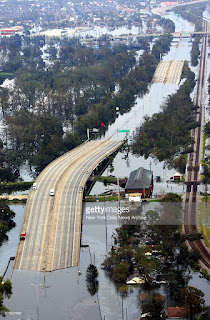 |
Engramme's Weekend with TV #10 - Wicked City (Listening B1-B2) |
When we look at a big city, especially one that we like, all we see is beauty. But rarely do we notice that a big city also breeds crime. And sometimes the police have to go above and beyond the call of duty to prevent or eliminate it.
 |
Watch, Listen & Enjoy |
Wicked City is the story of a notorious serial killer who would kill his victims, women he picked up in bars, after he drugged or abused them. LAPD's best team of detectives was after him, but he was too smart to leave behind any trace of himself.
Although the story was appealing, the TV station, ABC, had to cancel the series after only one season due to low ratings. Although the end of the season somehow meant the end of the story, the creators also made sure they left ABC the chance to take up the story at a later date if they wished the series to make a comeback.
Watch the Series' Featurette: What is contradictory about the character of the killer?
 |
Let's Learn |
As is usual with commercials, the descriptive language in this promotional video contains many examples of useful collocations that learners of English could learn and use in their own speaking and/or writing.
Watch and Listen Again: Fill in the blanks with the words you hear (the blanks and the boldface words accompanying them show examples of common English collocations):
(mouse over the underlined words to see their meaning)
This is a story
in 1980 on the Sunset Strip where we deal with a whole lot of different people
from different ______ of life in the world of rock and roll.
The focus was ______ yourself in music, rock and roll, and sex
and drugs; for some: murder!
-
“That's right, folks. Another
day, another corpse!”
Los Angeles during that time was the serial killer capital of world.
-
“_________ murders,
our guy’s done this before.”
Ed Westwick plays Kent, the serial killer we are introduced to in this
world.
-
“I'm _______ on a
story.”
-
“What’s the story?”
-
“All this.”
He uses young girls’ ambitions to lure them into his ______.
-
“I was you once; people
helped me out. So kill me, I like giving back.”
-
“All right.”
And then he kills ‘em!
-
“I'd like to make a __________.”
During the course of our pilot, he meets a young woman named Betty.
-
“Everybody's looking for love,
right? And that's the Sunset Strip. Accept me for who I am. You see what I'm
seeing?”
-
“That's so true!”
They form this unusual _________ because underneath it all
she's a sociopath, too.
-
“Do you like kids?”
-
“I absolutely love children.”
The juxtaposition between these two characters who are able to show
love, not only to each other, but to young children…
-
“Hey, Mary! You’re a lifesaver
Kent.”
And then on the other side of that, they _______ be more
devious and couldn't be darker. And together they form this kind of Bonnie-and-Clyde-like
serial killer duo.
Really looks at the glamor of it all, and it turns it _______
and looks at what's underneath the darkness beneath.
It’s balancing that dark subject matter with enough of the glitz and
enough of the fun that was _______ ___
at the time.
It's rock and roll, it's frightening, it's emotional, it's really
sexy.
I think this show is a really bold show for ABC to make. They're
really _______ a chance, a risk, and it's very exciting to be a part of
that.
-
“I've never done anything
like that.”
-
“This is just the _________.”
|
(click here to compare your answers)
Good Job! And that wraps up this week's lessons. We'll be back tomorrow, Saturday, for another edition of Weekend with Music lesson. If you like our posts, subscribe (top right of the blog) through g+ or email and receive the posts as soon as we upload them here. Click the buttons (below) to share this post with your fellow learners.
You can also Review the Vocabulary from this lesson HERE
Teacher's can Download a Print-friendly Copy of the post HERE










